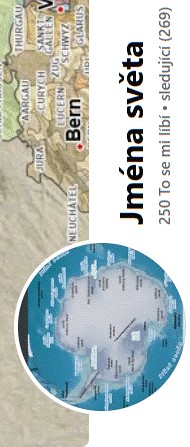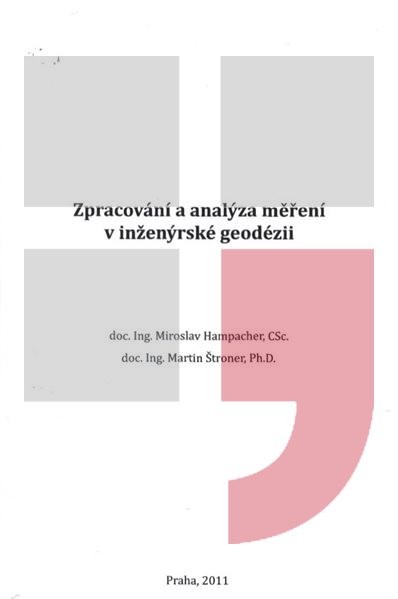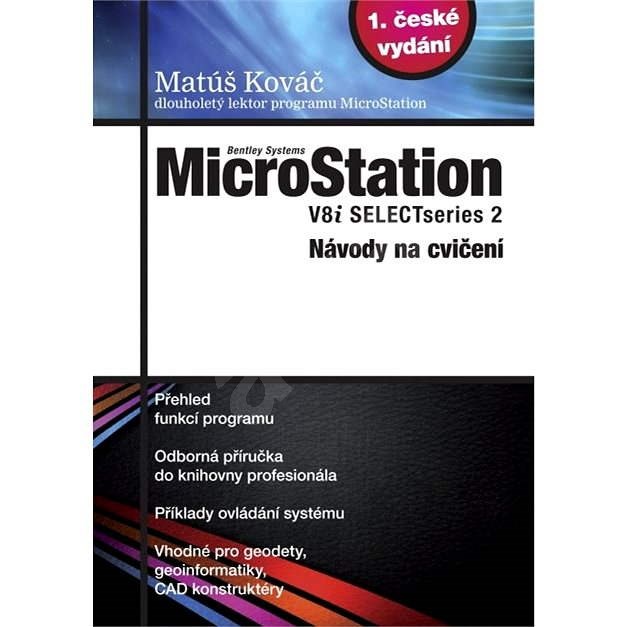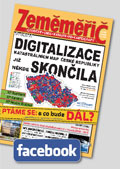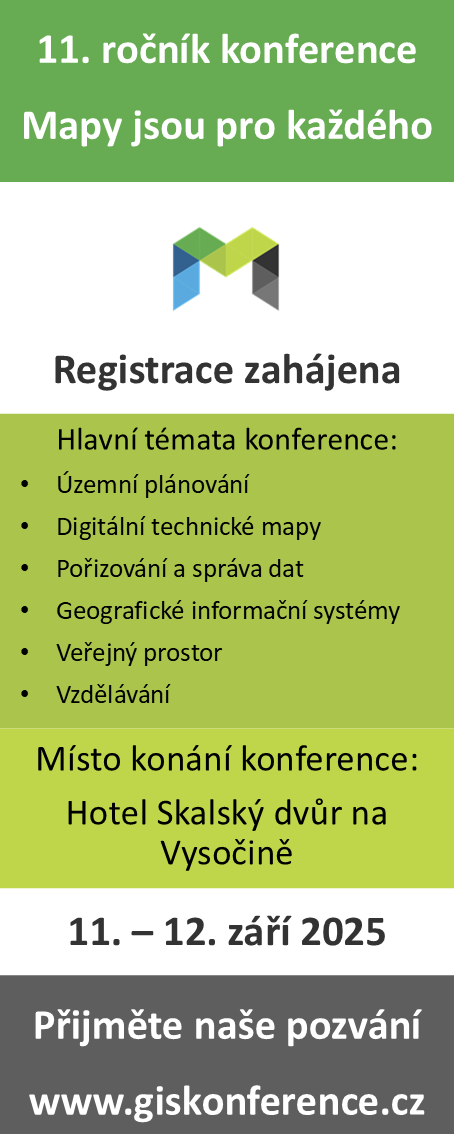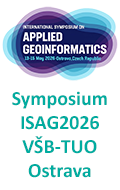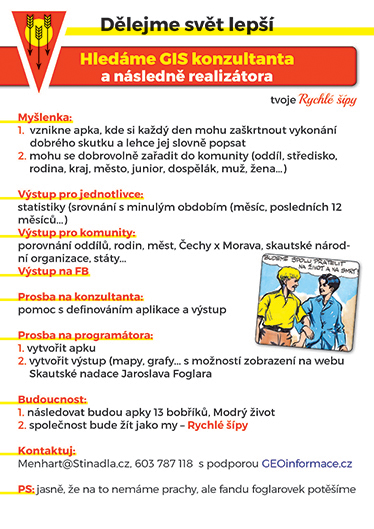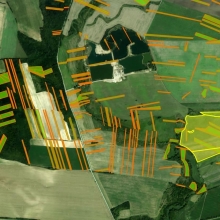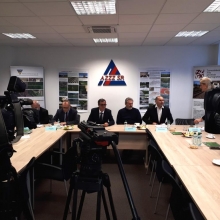zprávy
zdroje zpráv:Atlantic enhances its airborne capability with Teledyne Optech’s new Galaxy T2000 and G2 sensor system
22.1.2020 9:35 GISCafe.com Webcasts-Webinars Vaughan, Ontario, January 21, 2020 — Teledyne Optech, a Teledyne Technologies [NYSE:TDY] company and global leader in lidar sensing, is pleased …Výběrové řízení na stipendijní pobyty v Polsku
22.1.2020 0:00 Geografický ústav MUBylo vypsáno výběrového řízení na stipendijní pobyty pro studenty a akademické pracovníky v Polsku.
Termín odevzdání přihlášek je 22. ledna 2020.
Detailní informace - https://www.dzs.cz/file/8183/POLSKO%20VR_AIA_20-21.pdf
Carlson Introduces Vsx7 GNSS Receiver for Machine Control
21.1.2020 23:22 Carlson Software MAYSVILLE, Kentucky, U.S.A. (January 2020) — Carlson Machine Control has introduced the Vsx7 multi-frequency position and heading receiver. The Vsx7 is a multiGNSS receiver designed specifically for machine control and can be installed on excavators, drills, pile drivers, and more. Paired with the Carlson A45 antennas, the Vsx7 features high-precision positioning in Athena RTK, Atlas […]Kdo vyhraje ocenění Mapa roku 2019? Můžete to být i vy.
21.1.2020 20:25 GeoBusinessČeská kartografická společnost zve k účasti v 22. ročníku odborné kartografické soutěže Mapa roku. Zakladatel soutěže prof. Vít Voženílek říká, že k vytvoření soutěže Mapa roku jej tehdy inspirovaly soutěže jako Známka roku, Kniha roku, Sportovec roku či Atlet roku. Nešlo přitom ani tak o nějaké velké mediální zviditelnění se, protože je to odborná soutěž. […]
The post Kdo vyhraje ocenění Mapa roku 2019? Můžete to být i vy. appeared first on GeoBusiness.
Kdo vyhraje ocenění Mapa roku 2019? Můžete to být i vy.
21.1.2020 20:25 GeoBusiness Česká kartografická společnost zve k účasti v 22. ročníku odborné kartografické soutěže Mapa roku. Zakladatel soutěže prof. Vít Voženílek říká, že k vytvoření soutěže Mapa roku jej tehdy inspirovaly soutěže jako Známka roku, Kniha roku, Sportovec roku či Atlet roku. Nešlo přitom ani tak o nějaké velké mediální zviditelnění se, protože je to odborná soutěž. […]$32+ Billion Unmanned Aerial Vehicle (UAV) Market Outlook, 2026 - Emerging Product Trends & Market Opportunities
21.1.2020 18:01 GISCafe.com Webcasts-Webinars Dublin, Jan. 21, 2020 (GLOBE NEWSWIRE) -- The "Global Unmanned Aerial Vehicle (UAV) Market 2020-2026 by Offering, Frame, MTOW, Technology, Range, …Digital Map Market Major Growth factors by: ESRI, Google, Tomtom, Mapbox, Digitalglobe, Digital Map Products - Dagoretti News (Google Maps)
21.1.2020 18:01 GISCafe.com Webcasts-WebinarsAirWorks Provides DJI Enterprise Drone Solutions
21.1.2020 18:00 GISCafe.com Webcasts-Webinars DUBAI, United Arab Emirates, Jan. 21, 2020 — (PRNewswire) — With its DJI Enterprise solutions, AirWorks is proving to be a …Genasys™ Inc. Schedules Fiscal First Quarter 2020 Financial Results Conference Call for Monday, February 10, 2020, 4:30 p.m. ET
21.1.2020 17:59 GISCafe.com Webcasts-Webinars SAN DIEGO, Jan. 21, 2020 (GLOBE NEWSWIRE) -- Genasys Inc (NASDAQ: GNSS), a critical communications company, today announced plans to release …Drone Delivery Data: 36% of Online Shoppers Are More Likely to Purchase an Item Delivered by Drone
21.1.2020 17:58 GISCafe.com Webcasts-Webinars More than one-third of online shoppers say they are more likely to purchase an item if they know it will be delivered by drone, according to a new …Global Unmanned Aerial Vehicle (UAV) Market Report 2020-2026
21.1.2020 17:58 GISCafe.com Webcasts-Webinars DUBLIN, Jan. 21, 2020 — (PRNewswire) — The "Global Unmanned Aerial Vehicle (UAV) Market 2020-2026 by Offering, Frame, MTOW, Technology, …3v Geomatics Joins NVIDIA Inception Program
21.1.2020 17:57 GISCafe.com Webcasts-Webinars VANCOUVER, British Columbia, Jan. 21, 2020 (GLOBE NEWSWIRE) -- 3v Geomatics, Inc. (3vG) is pleased to announce that it has joined the NVIDIA …Global Geophysical Services (Seismic, Magnetic, Gravity, LIDAR, Others) Market Outlook, 2019-2024
21.1.2020 17:57 GISCafe.com Webcasts-Webinars Dublin, Jan. 21, 2020 (GLOBE NEWSWIRE) -- The "Global Geophysical Services Market, By Technology (Seismic, Magnetic, Gravity, LIDAR & Others), By …Čo bolo, to bolo alebo návrat do reality.
21.1.2020 17:28 Komora pozemkových úprav SRAké sú dôsledky neschválenia novely zákona o pozemkových úpravách?
Čo bolo, to bolo alebo návrat do reality.
21.1.2020 17:28 Komora pozemkových úprav SROdmietnutím novely zákona o PÚ zostáva v platnosti prednostné právo na uzavretie nájomných zmlúv v pôvodnej podobe
Čo bolo, to bolo alebo návrat do reality.
21.1.2020 17:28 Komora pozemkových úprav SRAké sú dôsledky neschválenia novely zákona o pozemkových úpravách?
Oznámení o konání revize katastru nemovitostí
21.1.2020 15:35 ČÚZK - předpisy a opatření Katastrální úřad pro Ústecký kraj - Katastrální pracoviště Děčín zveřejnil novou aktualitu: Vážení klienti,oznamujeme Vám, že od března 2021 budou probíhat v katastrálních územích Benešov nad Ploučnicí, Dolní Habartice, Horní Habartice, Malá Veleň, Malý Šachov a Starý Šachov revize katastru nemovitostí.
Účelem provádění revize je soulad údajů katastru nemovitostí se skutečným stavem v terénu, kdy jsou zjišťovány změny a ověřován dosavadní stav předmětu evidence katastru nemovitostí.
Oznámení o konání revize katastru nemovitostí
21.1.2020 15:35 ČÚZK - předpisy a opatření Katastrální úřad pro Ústecký kraj - Katastrální pracoviště Děčín zveřejnil novou aktualitu: Vážení klienti,oznamujeme Vám, že od března 2020 budou probíhat v katastrálních územích Babětín, Přední Lhota u Těchlovic, Přerov u Těchlovic a Těchlovice obce Těchlovice revize katastru nemovitostí.
Účelem provádění revize je soulad údajů katastru nemovitostí se skutečným stavem v terénu, kdy jsou zjišťovány změny a ověřován dosavadní stav předmětu evidence katastru nemovitostí.
Oznámení o konání revize katastru nemovitostí
21.1.2020 15:35 ČÚZK /Urady/Katastralni-urady/Katastralni-urady/Katastralni-urad-pro-Ustecky-kraj/Katastralni-pracoviste/KP-Decin/O-uradu/Aktuality/Oznameni-o-konani-revize-katastru-nemovitostiZ důvodu změn na serverech ČÚZ
21.1.2020 14:45 GEUSware Z důvodu změn na serverech ČÚZK přestalo fungovat Nahlížení do KN z programu GEUS a Geometr. Usilovně pracujeme na opravě a vydání nových sestavení programů GEUS 24.0 a Geometr 18.0. Podívejte se na změny, které schválila vláda v novele zákona o pozemkových úpravách
21.1.2020 14:00 ZeměměřičVláda ČR schválila na své schůzi 13. ledna 2020 novelu zákona o pozemkových úpravách, přesněji návrh zákona, kterým se mění zákon č. 139/2002 Sb., o pozemkových úpravách a pozemkových úřadech a o změně zákona č. 229/1991 Sb., o úpravě vlastnických vztahů k půdě a jinému zemědělskému majetku, ve znění pozdějších předpisů, ve znění pozdějších předpisů, a zákon č. 256/2013 Sb., o katastru nemovitostí (katastrální zákon), ve znění pozdějších předpisů. […]
The post Podívejte se na změny, které schválila vláda v novele zákona o pozemkových úpravách appeared first on Zeměměřič.
Podívejte se na změny, které vláda schválila v novele zákona o pozemkových úpravách
21.1.2020 14:00 ZeměměřičVláda ČR schválila na své schůzi 13. ledna 2020 novelu zákona o pozemkových úpravách, přesněji návrh zákona, kterým se mění zákon č. 139/2002 Sb., o pozemkových úpravách a pozemkových úřadech a o změně zákona č. 229/1991 Sb., o úpravě vlastnických vztahů k půdě a jinému zemědělskému majetku, ve znění pozdějších předpisů, ve znění pozdějších předpisů, a zákon č. 256/2013 Sb., o katastru nemovitostí (katastrální zákon), ve znění pozdějších předpisů. […]
The post Podívejte se na změny, které vláda schválila v novele zákona o pozemkových úpravách appeared first on Zeměměřič.
Riegl’s Uas / Uls Market Presence Grows In North America Through Geocue Group Oem Partnership
21.1.2020 12:35 GISCafe.com Webcasts-Webinars January 17, 2020 -- by RIEGL · in 3D Laser Mapping, Airborne …Přihlaste svá díla do 22. ročníku soutěže Mapa roku!
21.1.2020 12:14 Česká kartografická společnost V letošním roce pořádá Česká kartografická společnost 22. ročník odborné soutěže Mapa roku. Vytvořili jste v roce 2019 nějakou mapu? Nebo víte o někom, kdo vytvořil nějaký zajímavý kartografický produkt – mapovou aplikaci, kartografický poster, globus… či jiné zajímavé dílo? Řekněte mu o soutěži. Kromě hodnocení odborné poroty, kdy nejlepší díla jsou oceněna titulem MAPA […]Galileo Return Link Service presented at European Space Conference
21.1.2020 11:21 European GNSS Agency
The Galileo Return Link Service, which allows people in distress to receive automatic acknowledgement that their signal has been received, was declared operational at the 12th European Space Conference, in the Egmont Palace in Brussels on January 21.
The Galileo Return Link Service (RLS) is a free-of-charge global service available to Cospas-Sarsat RLS compatible beacons. The new functionality, currently offered uniquely by Galileo, enables a communication link that relays Return Link Messages (RLM) back to the originating beacon through the Galileo Navigation Signal in Space (I/NAV E1).
Joint effort
The RLS is a joint effort between Cospas-Sarsat and the Galileo programme, supported on one hand by the existing Cospas-Sarsat system and, on the other, by a new Galileo Service Facility called the Return Link Service Provider (RLSP). The RLSP is in charge of securely providing the ground segment interface between the French Mission Control Centre and the Galileo core infrastructure, enabling the transmission of RLM requests to Galileo satellites in view of the beacon.
“The GSA, as the Galileo Search and Rescue Service Authority, has contributed tremendously to the development of the Return Link,” said GSA Executive Director Carlo des Dorides. “The GSA has also supported the development of Galileo Return Link-enabled beacons in recent years. Today, there are several beacon manufacturers worldwide ready to sell Galileo SAR Return Link-compatible beacons, including 5 in Europe,” he said.
Read this: Remote beacon activation with Galileo return link successfully tested
By sending a confirmation to the user that the distress signal from the beacon has been localised by the Cospas-Sarsat system and the information relayed to the relevant Search and Rescue governmental authorities, the Return Link Service (RLS) will help save more lives. Receiving reassurance that their distress alert has been well received will deliver a valuable psychological lift to victims and further boost survival rates by reducing panic.
“The contributions to Cospas-Sarsat from France and the CNES, as the Galileo SAR Operator, have been of paramount importance in transforming the Galileo SAR Return Link Service into a success,” said French Space Agency (CNES) President and GSA Administrative Board Chair Jean-Yves Le Gall.
Unique differentiator
The end-to-end RLM delivery time is expected to be about 10 minutes, but in some cases it may take longer, possibly up to 30 minutes from the moment the beacon is activated until the notification is sent via the Galileo Signal in Space. A total of 15 minutes are allocated to the Cospas-Sarsat system for the localisation and routing of the alert and 15 minutes to the Galileo System for the Return Link message broadcast. However, measured results generally achieve a much faster message delivery time.
And this: Operation Shark Bait: Galileo SAR will save lives!
“Today with its unique differentiator, Galileo SAR is demonstrating how Europe is at the forefront of high technology for the good of European citizens. This wouldn’t have been possible without the strong support of the international community - Cospas-Sarsat, CNES, the International Maritime Organization and the International Civil Aviation Organization - and the main beacon manufacturers, all of which have contributed to the provision of an end-to-end solution for people in distress,” said Thierry Breton, European Commissioner for the Internal Market.
A Return Link capability was first introduced by the Galileo Programme back in 2005. The SAR community soon expressed interest and, in 2008, the Return Link Service was adopted in the Cospas-Sarsat Strategic Plan. Following a great deal of effort by the Galileo Programme, Cospas-Sarsat and beacon manufacturers, a dedicated transmission protocol for Return Link-enabled beacons was established in 2010 and successfully verified during the Galileo In-Orbit Validation Phase in 2013. In 2019, deployment of the required infrastructure was completed and the Return Link Service underwent a thorough System and Service validation that concluded in November 2019.
The SAR Service Definition Document (SAR SDD), available in the European GNSS Service Centre electronic library, is aimed at Galileo SAR users, and describes in detail the characteristics and performance of the Galileo SAR Services. The document presents the relevant system infrastructure and introduces the Minimum Performance Levels that represent Galileo’s commitment to its users during the Galileo SAR Service provision phase.
Galileo SAR RLS users that would like to receive more information can send their inquiries to the European GNSS Service Centre Help Desk at: www.gsc-europa.eu/helpdesk.
Media note: This feature can be republished without charge provided the European GNSS Agency (GSA) is acknowledged as the source at the top or the bottom of the story. You must request permission before you use any of the photographs on the site. If you republish, we would be grateful if you could link back to the GSA website (http://www.gsa.europa.eu).
Galileo Return Link Service presented at European Space Conference
21.1.2020 11:21 European GNSS Agency
The Galileo Return Link Service, which allows people in distress to receive automatic acknowledgement that their signal has been received, was declared operational at the 12th European Space Conference, in the Egmont Palace in Brussels on January 21.
The Galileo Return Link Service (RLS) is a free-of-charge global service available to Cospas-Sarsat RLS compatible beacons. The new functionality, currently offered uniquely by Galileo, enables a communication link that relays Return Link Messages (RLM) back to the originating beacon through the Galileo Navigation Signal in Space (I/NAV E1).
Joint effort
The RLS is a joint effort between Cospas-Sarsat and the Galileo programme, supported on one hand by the existing Cospas-Sarsat system and, on the other, by a new Galileo Service Facility called the Return Link Service Provider (RLSP). The RLSP is in charge of securely providing the ground segment interface between the French Mission Control Centre and the Galileo core infrastructure, enabling the transmission of RLM requests to Galileo satellites in view of the beacon.
“The GSA, as the Galileo Search and Rescue Service Authority, has contributed tremendously to the development of the Return Link,” said GSA Executive Director Carlo des Dorides. “The GSA has also supported the development of Galileo Return Link-enabled beacons in recent years. Today, there are several beacon manufacturers worldwide ready to sell Galileo SAR Return Link-compatible beacons, including 5 in Europe,” he said.
Read this: Remote beacon activation with Galileo return link successfully tested
By sending a confirmation to the user that the distress signal from the beacon has been localised by the Cospas-Sarsat system and the information relayed to the relevant Search and Rescue governmental authorities, the Return Link Service (RLS) will help save more lives. Receiving reassurance that their distress alert has been well received will deliver a valuable psychological lift to victims and further boost survival rates by reducing panic.
“The contributions to Cospas-Sarsat from France and the CNES, as the Galileo SAR Operator, have been of paramount importance in transforming the Galileo SAR Return Link Service into a success,” said French Space Agency (CNES) President and GSA Administrative Board Chair Jean-Yves Le Gall.
Unique differentiator
The end-to-end RLM delivery time is expected to be about 10 minutes, but in some cases it may take longer, possibly up to 30 minutes from the moment the beacon is activated until the notification is sent via the Galileo Signal in Space. A total of 15 minutes are allocated to the Cospas-Sarsat system for the localisation and routing of the alert and 15 minutes to the Galileo System for the Return Link message broadcast. However, measured results generally achieve a much faster message delivery time.
And this: Operation Shark Bait: Galileo SAR will save lives!
“Today with its unique differentiator, Galileo SAR is demonstrating how Europe is at the forefront of high technology for the good of European citizens. This wouldn’t have been possible without the strong support of the international community - Cospas-Sarsat, CNES, the International Maritime Organization and the International Civil Aviation Organization - and the main beacon manufacturers, all of which have contributed to the provision of an end-to-end solution for people in distress,” said Thierry Breton, European Commissioner for the Internal Market.
A Return Link capability was first introduced by the Galileo Programme back in 2005. The SAR community soon expressed interest and, in 2008, the Return Link Service was adopted in the Cospas-Sarsat Strategic Plan. Following a great deal of effort by the Galileo Programme, Cospas-Sarsat and beacon manufacturers, a dedicated transmission protocol for Return Link-enabled beacons was established in 2010 and successfully verified during the Galileo In-Orbit Validation Phase in 2013. In 2019, deployment of the required infrastructure was completed and the Return Link Service underwent a thorough System and Service validation that concluded in November 2019.
The SAR Service Definition Document (SAR SDD), available in the European GNSS Service Centre electronic library, is aimed at Galileo SAR users, and describes in detail the characteristics and performance of the Galileo SAR Services. The document presents the relevant system infrastructure and introduces the Minimum Performance Levels that represent Galileo’s commitment to its users during the Galileo SAR Service provision phase.
Galileo SAR RLS users that would like to receive more information can send their inquiries to the European GNSS Service Centre Help Desk at: www.gsc-europa.eu/helpdesk.
Media note: This feature can be republished without charge provided the European GNSS Agency (GSA) is acknowledged as the source at the top or the bottom of the story. You must request permission before you use any of the photographs on the site. If you republish, we would be grateful if you could link back to the GSA website (http://www.gsa.europa.eu).
Galileo Return Link Service presented at European Space Conference
21.1.2020 11:21 European GNSS Agency
The Galileo Return Link Service, which allows people in distress to receive automatic acknowledgement that their signal has been received, was declared operational at the 12th European Space Conference, in the Egmont Palace in Brussels on January 21.
The Galileo Return Link Service (RLS) is a free-of-charge global service available to Cospas-Sarsat RLS compatible beacons. The new functionality, currently offered uniquely by Galileo, enables a communication link that relays Return Link Messages (RLM) back to the originating beacon through the Galileo Navigation Signal in Space (I/NAV E1).
Joint effort
The RLS is a joint effort between Cospas-Sarsat and the Galileo programme, supported on one hand by the existing Cospas-Sarsat system and, on the other, by a new Galileo Service Facility called the Return Link Service Provider (RLSP). The RLSP is in charge of securely providing the ground segment interface between the French Mission Control Centre and the Galileo core infrastructure, enabling the transmission of RLM requests to Galileo satellites in view of the beacon.
“The GSA, as the Galileo Search and Rescue Service Authority, has contributed tremendously to the development of the Return Link,” said GSA Executive Director Carlo des Dorides. “The GSA has also supported the development of Galileo Return Link-enabled beacons in recent years. Today, there are several beacon manufacturers worldwide ready to sell Galileo SAR Return Link-compatible beacons, including 5 in Europe,” he said.
Read this: Remote beacon activation with Galileo return link successfully tested
By sending a confirmation to the user that the distress signal from the beacon has been localised by the Cospas-Sarsat system and the information relayed to the relevant Search and Rescue governmental authorities, the Return Link Service (RLS) will help save more lives. Receiving reassurance that their distress alert has been well received will deliver a valuable psychological lift to victims and further boost survival rates by reducing panic.
“The contributions to Cospas-Sarsat from France and the CNES, as the Galileo SAR Operator, have been of paramount importance in transforming the Galileo SAR Return Link Service into a success,” said French Space Agency (CNES) President and GSA Administrative Board Chair Jean-Yves Le Gall.
Unique differentiator
The end-to-end RLM delivery time is expected to be about 10 minutes, but in some cases it may take longer, possibly up to 30 minutes from the moment the beacon is activated until the notification is sent via the Galileo Signal in Space. A total of 15 minutes are allocated to the Cospas-Sarsat system for the localisation and routing of the alert and 15 minutes to the Galileo System for the Return Link message broadcast. However, measured results generally achieve a much faster message delivery time.
And this: Operation Shark Bait: Galileo SAR will save lives!
“Today with its unique differentiator, Galileo SAR is demonstrating how Europe is at the forefront of high technology for the good of European citizens. This wouldn’t have been possible without the strong support of the international community - Cospas-Sarsat, CNES, the International Maritime Organization and the International Civil Aviation Organization - and the main beacon manufacturers, all of which have contributed to the provision of an end-to-end solution for people in distress,” said Thierry Breton, European Commissioner for the Internal Market.
A Return Link capability was first introduced by the Galileo Programme back in 2005. The SAR community soon expressed interest and, in 2008, the Return Link Service was adopted in the Cospas-Sarsat Strategic Plan. Following a great deal of effort by the Galileo Programme, Cospas-Sarsat and beacon manufacturers, a dedicated transmission protocol for Return Link-enabled beacons was established in 2010 and successfully verified during the Galileo In-Orbit Validation Phase in 2013. In 2019, deployment of the required infrastructure was completed and the Return Link Service underwent a thorough System and Service validation that concluded in November 2019.
The SAR Service Definition Document (SAR SDD), available in the European GNSS Service Centre electronic library, is aimed at Galileo SAR users, and describes in detail the characteristics and performance of the Galileo SAR Services. The document presents the relevant system infrastructure and introduces the Minimum Performance Levels that represent Galileo’s commitment to its users during the Galileo SAR Service provision phase.
Galileo SAR RLS users that would like to receive more information can send their inquiries to the European GNSS Service Centre Help Desk at: www.gsc-europa.eu/helpdesk.
Media note: This feature can be republished without charge provided the European GNSS Agency (GSA) is acknowledged as the source at the top or the bottom of the story. You must request permission before you use any of the photographs on the site. If you republish, we would be grateful if you could link back to the GSA website (http://www.gsa.europa.eu).
Galileo Return Link Service declared at European Space Conference
21.1.2020 11:21 European GNSS Agency
The Galileo Return Link Service, which allows people in distress to receive automatic acknowledgement that their signal has been received, was declared operational at the 12th European Space Conference, in the Egmont Palace in Brussels on January 21.
The Galileo Return Link Service (RLS) is a free-of-charge global service available to Cospas-Sarsat RLS compatible beacons. The new functionality, currently offered uniquely by Galileo, enables a communication link that relays Return Link Messages (RLM) back to the originating beacon through the Galileo Navigation Signal in Space (I/NAV E1).
Joint effort
The RLS is a joint effort between Cospas-Sarsat and the Galileo programme, supported on one hand by the existing Cospas-Sarsat system and, on the other, by a new Galileo Service Facility called the Return Link Service Provider (RLSP). The RLSP is in charge of securely providing the ground segment interface between the French Mission Control Centre and the Galileo core infrastructure, enabling the transmission of RLM requests to Galileo satellites in view of the beacon.
“The GSA, as the Galileo Search and Rescue Service Authority, has contributed tremendously to the development of the Return Link,” said GSA Executive Director Carlo des Dorides. “The GSA has also supported the development of Galileo Return Link-enabled beacons in recent years. Today, there are several beacon manufacturers worldwide ready to sell Galileo SAR Return Link-compatible beacons, including 5 in Europe,” he said.
Read this: Remote beacon activation with Galileo return link successfully tested
By sending a confirmation to the user that the distress signal from the beacon has been localised by the Cospas-Sarsat system and the information relayed to the relevant Search and Rescue governmental authorities, the Return Link Service (RLS) will help save more lives. Receiving reassurance that their distress alert has been well received will deliver a valuable psychological lift to victims and further boost survival rates by reducing panic.
“The contributions to Cospas-Sarsat from France and the CNES, as the Galileo SAR Operator, have been of paramount importance in transforming the Galileo SAR Return Link Service into a success,” said French Space Agency (CNES) President and GSA Administrative Board Chair Jean-Yves Le Gall.
Unique differentiator
The end-to-end RLM delivery time is expected to be about 10 minutes, but in some cases it may take longer, possibly up to 30 minutes from the moment the beacon is activated until the notification is sent via the Galileo Signal in Space. A total of 15 minutes are allocated to the Cospas-Sarsat system for the localisation and routing of the alert and 15 minutes to the Galileo System for the Return Link message broadcast. However, measured results generally achieve a much faster message delivery time.
And this: Operation Shark Bait: Galileo SAR will save lives!
“Today with its unique differentiator, Galileo SAR is demonstrating how Europe is at the forefront of high technology for the good of European citizens. This wouldn’t have been possible without the strong support of the international community - Cospas-Sarsat, CNES, the International Maritime Organization and the International Civil Aviation Organization - and the main beacon manufacturers, all of which have contributed to the provision of an end-to-end solution for people in distress,” said Thierry Breton, European Commissioner for the Internal Market.
A Return Link capability was first introduced by the Galileo Programme back in 2005. The SAR community soon expressed interest and, in 2008, the Return Link Service was adopted in the Cospas-Sarsat Strategic Plan. Following a great deal of effort by the Galileo Programme, Cospas-Sarsat and beacon manufacturers, a dedicated transmission protocol for Return Link-enabled beacons was established in 2010 and successfully verified during the Galileo In-Orbit Validation Phase in 2013. In 2019, deployment of the required infrastructure was completed and the Return Link Service underwent a thorough System and Service validation that concluded in November 2019.
The SAR Service Definition Document (SAR SDD), available in the European GNSS Service Centre electronic library, is aimed at Galileo SAR users, and describes in detail the characteristics and performance of the Galileo SAR Services. The document presents the relevant system infrastructure and introduces the Minimum Performance Levels that represent Galileo’s commitment to its users during the Galileo SAR Service provision phase.
Galileo SAR RLS users that would like to receive more information can send their inquiries to the European GNSS Service Centre Help Desk at: www.gsc-europa.eu/helpdesk.
Media note: This feature can be republished without charge provided the European GNSS Agency (GSA) is acknowledged as the source at the top or the bottom of the story. You must request permission before you use any of the photographs on the site. If you republish, we would be grateful if you could link back to the GSA website (http://www.gsa.europa.eu).
Galileo Return Link Service presented at European Space Conference
21.1.2020 11:21 European GNSS Agency
The Galileo Return Link Service, which allows people in distress to receive automatic acknowledgement that their signal has been received, was presented at the 12th European Space Conference, in the Egmont Palace in Brussels on January 21.
The Galileo Return Link Service (RLS) is a free-of-charge global service available to Cospas-Sarsat RLS compatible beacons. The new functionality, currently offered uniquely by Galileo, enables a communication link that relays Return Link Messages (RLM) back to the originating beacon through the Galileo Navigation Signal in Space (I/NAV E1).
Joint effort
The RLS is a joint effort between Cospas-Sarsat and the Galileo programme, supported on one hand by the existing Cospas-Sarsat system and, on the other, by a new Galileo Service Facility called the Return Link Service Provider (RLSP). The RLSP is in charge of securely providing the ground segment interface between the French Mission Control Centre and the Galileo core infrastructure, enabling the transmission of RLM requests to Galileo satellites in view of the beacon.
“The GSA, as the Galileo Search and Rescue Service Authority, has contributed tremendously to the development of the Return Link,” said GSA Executive Director Carlo des Dorides. “The GSA has also supported the development of Galileo Return Link-enabled beacons in recent years. Today, there are several beacon manufacturers worldwide ready to sell Galileo SAR Return Link-compatible beacons, including 5 in Europe,” he said.
Read this: Remote beacon activation with Galileo return link successfully tested
By sending a confirmation to the user that the distress signal from the beacon has been localised by the Cospas-Sarsat system and the information relayed to the relevant Search and Rescue governmental authorities, the Return Link Service (RLS) will help save more lives. Receiving reassurance that their distress alert has been well received will deliver a valuable psychological lift to victims and further boost survival rates by reducing panic.
“The contributions to Cospas-Sarsat from France and the CNES, as the Galileo SAR Operator, have been of paramount importance in transforming the Galileo SAR Return Link Service into a success,” said French Space Agency (CNES) President and GSA Administrative Board Chair Jean-Yves Le Gall.
Unique differentiator
The end-to-end RLM delivery time is expected to be about 10 minutes, but in some cases it may take longer, possibly up to 30 minutes from the moment the beacon is activated until the notification is sent via the Galileo Signal in Space. A total of 15 minutes are allocated to the Cospas-Sarsat system for the localisation and routing of the alert and 15 minutes to the Galileo System for the Return Link message broadcast. However, measured results generally achieve a much faster message delivery time.
And this: Operation Shark Bait: Galileo SAR will save lives!
“Today with its unique differentiator, Galileo SAR is demonstrating how Europe is at the forefront of high technology for the good of European citizens. This wouldn’t have been possible without the strong support of the international community - Cospas-Sarsat, CNES, the International Maritime Organization and the International Civil Aviation Organization - and the main beacon manufacturers, all of which have contributed to the provision of an end-to-end solution for people in distress,” said Thierry Breton, European Commissioner for the Internal Market.
A Return Link capability was first introduced by the Galileo Programme back in 2005. The SAR community soon expressed interest and, in 2008, the Return Link Service was adopted in the Cospas-Sarsat Strategic Plan. Following a great deal of effort by the Galileo Programme, Cospas-Sarsat and beacon manufacturers, a dedicated transmission protocol for Return Link-enabled beacons was established in 2010 and successfully verified during the Galileo In-Orbit Validation Phase in 2013. In 2019, deployment of the required infrastructure was completed and the Return Link Service underwent a thorough System and Service validation that concluded in November 2019.
The SAR Service Definition Document (SAR SDD), available in the European GNSS Service Centre electronic library, is aimed at Galileo SAR users, and describes in detail the characteristics and performance of the Galileo SAR Services. The document presents the relevant system infrastructure and introduces the Minimum Performance Levels that represent Galileo’s commitment to its users during the Galileo SAR Service provision phase.
Galileo SAR RLS users that would like to receive more information can send their inquiries to the European GNSS Service Centre Help Desk at: www.gsc-europa.eu/helpdesk.
Media note: This feature can be republished without charge provided the European GNSS Agency (GSA) is acknowledged as the source at the top or the bottom of the story. You must request permission before you use any of the photographs on the site. If you republish, we would be grateful if you could link back to the GSA website (http://www.gsa.europa.eu).
Výběrové řízení na obsažení služebního řidič Zeměměřického a katastrálního inspektorátu v Pardubicíc
21.1.2020 11:19 ČÚZK - volná místa Zeměměřický a katastrální inspektorát v Pardubicích vypisuje výběrové řízení na místo Výběrové řízení na obsažení služebního řidič Zeměměřického a katastrálního inspektorátu v PardubicícVýběrové řízení na obsažení služebního řidič Zeměměřického a katastrálního inspektorátu v Pardubicíc
21.1.2020 11:19 ČÚZK - předpisy a opatření Zeměměřický a katastrální inspektorát v Pardubicíchvypisuje výběrové řízení na místo
Výběrové řízení na obsažení služebního řidič Zeměměřického a katastrálního inspektorátu v Pardubicích
Výběrové řízení na obsažení služebního řidič Zeměměřického a katastrálního inspektorátu v Pardubicíc
21.1.2020 11:19 ČÚZK /Urady/Zememericke-a-katastralni-inspektoraty/Zememericke-a-katastralni-inspektoraty/Zememericky-a-katastralni-inspektorat-v-Pardubicic/Volna-mista/DMS/Vyberove-rizeni-na-obsazeni-sluzebniho-ridic-ZememVýroční souhrnná resortní zpráva za rok 2019
21.1.2020 11:13 ČÚZK - předpisy a opatření Katastrální úřad pro Moravskoslezský krajvydává výroční zprávu úřadu za rok
2019
Vlastníctvo a užívanie poľnohospodárskej pôdy
21.1.2020 10:56 Komora pozemkových úprav SRAké sú špecifiká v užívaní poľnohospodárskej pôdy v SR v súvislosti s vlastníctvom a nájmom?
Věcné úkoly Katastrálního úřadu pro Moravskoslezský kraj v roce 2020
21.1.2020 10:54 ČÚZK /Urady/Katastralni-urady/Katastralni-urady/Katastralni-urad-pro-Moravskoslezsky-kraj/O-uradu/Aktuality/Vecne-ukoly-Katastralniho-uradu-pro-Moravskosl-(1)Věcné úkoly Katastrálního úřadu pro Moravskoslezský kraj v roce 2021
21.1.2020 10:54 ČÚZK /Urady/Katastralni-urady/Katastralni-urady/Katastralni-urad-pro-Moravskoslezsky-kraj/O-uradu/Aktuality/Vecne-ukoly-Katastralniho-uradu-pro-Moravskosl-(1)Věcné úkoly Katastrálního úřadu pro Moravskoslezský kraj v roce 2021
21.1.2020 10:54 ČÚZK - předpisy a opatření Katastrální úřad pro Moravskoslezský kraj zveřejnil novou aktualitu: Seznam schválených věcných úkolů s plánovaným dokončením v roce 2021.Věcné úkoly Katastrálního úřadu pro Moravskoslezský kraj v roce 2020
21.1.2020 10:54 ČÚZK - předpisy a opatření Katastrální úřad pro Moravskoslezský kraj zveřejnil novou aktualitu: Seznam schválených věcných úkolů pro rok 2020.Věcné úkoly Katastrálního úřadu pro Moravskoslezský kraj v roce 2021
21.1.2020 10:54 ČÚZK - předpisy a opatření Katastrální úřad pro Moravskoslezský kraj zveřejnil novou aktualitu: Seznam schválených věcných úkolů s plánovaným dokončením v roce 2021 (s uvedeným datem již dokončených VÚ).Rozpočet úřadu za rok 2020
21.1.2020 10:38 ČÚZK - předpisy a opatření Zeměměřický úřadvystavuje rozpočet úřadu za rok
2020
Rozpočet úřadu za rok 2020
21.1.2020 10:38 Zeměměřický úřad Zeměměřický úřadvystavuje rozpočet úřadu za rok
2020
Rozpočet úřadu za rok 2020
21.1.2020 10:38 ČÚZK /Urady/Zememericky-urad/Rozpocty/Rozpocet-uradu-za-rok-2020Cestovní granty podporující účast na 15. plenárním zasedání v Melbourne
21.1.2020 9:52 Blogující geomatici - FAV ZČU- Call for Early Career Researchers and Scientists working with Data
- Call for Researchers and Data Experts
20200121 - volné místo - Odborný referent v OPV k nemovitostem KP Děčín na KÚ pro Ústecký kraj
21.1.2020 9:40 ČÚZK /Urady/Katastralni-urady/Katastralni-urady/Katastralni-urad-pro-Ustecky-kraj/Katastralni-pracoviste/KP-Decin/O-uradu/Aktuality/20200121-volne-misto-Odborny-referent-v-OPV-k20200121 - volné místo - Odborný referent v OPV k nemovitostem KP Děčín na KÚ pro Ústecký kraj
21.1.2020 9:40 ČÚZK - předpisy a opatření Katastrální úřad pro Ústecký kraj - Katastrální pracoviště Děčín zveřejnil novou aktualitu: Nabídka volného pracovního místa - Odborný referent v oddělení právních vztahů k nemovitostem Katastrálního pracoviště Děčín na Katastrálním úřadu pro Ústecký krajLednový Missing Maps Mapathon v Praze (pozvánka)
21.1.2020 8:52 GISportal.cz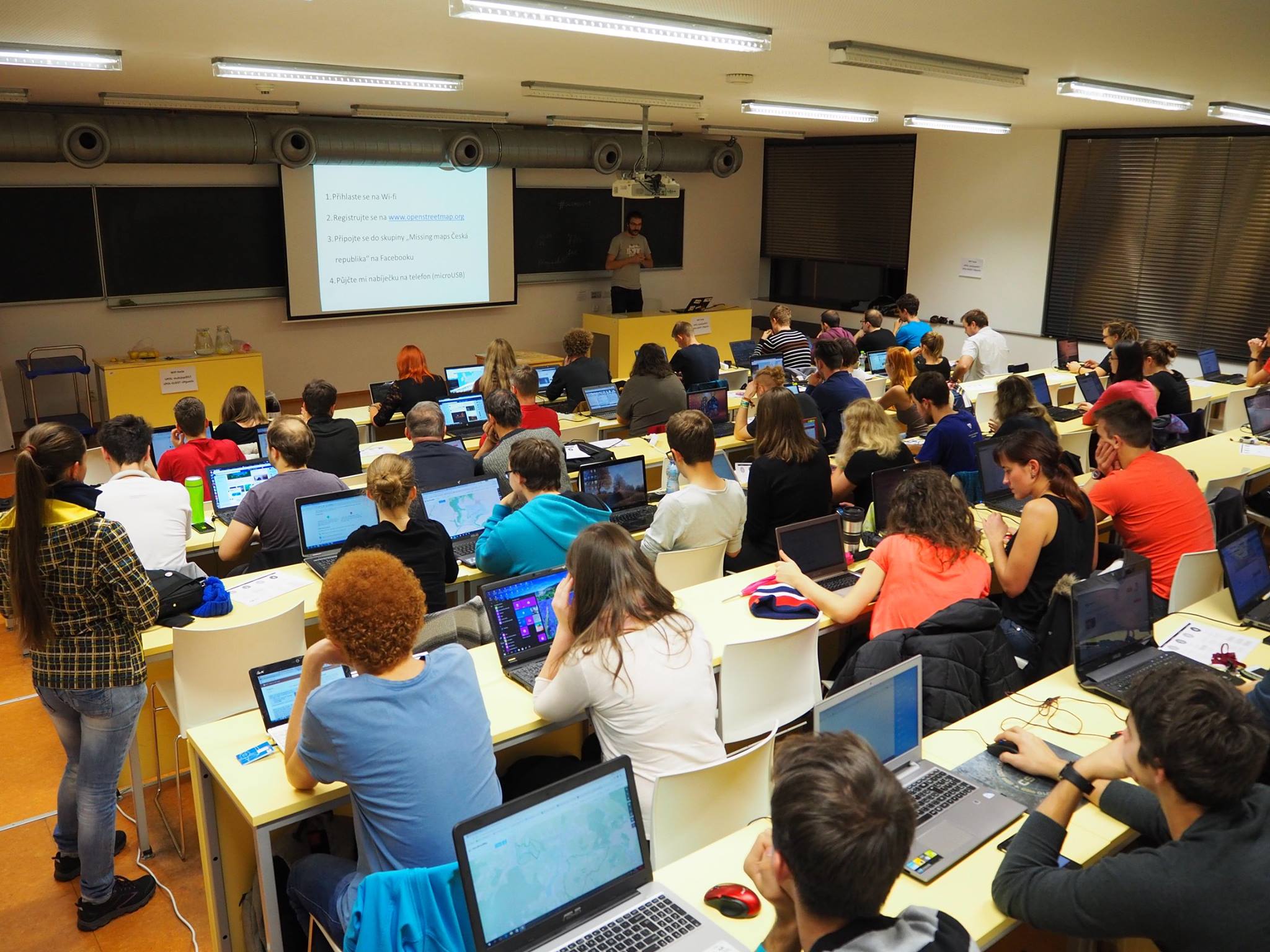
Lednový Missing Maps Mapathon se uskuteční v Praze 28. ledna od18:00 do 21:00 v kanceláři Lékařů bez Hranic. Přijďte a podpořte práci humanitárních organizací tím, že pomůžete zmapovat místa, která jsou nejvíce ohrožena krizemi. Mapathon společně organizují Lékaři bez hranic a Český červený kříž. Srdečně zveme úplné začátečníky i ty, kdo už mapovat umí. Co se na setkání […]
The post Lednový Missing Maps Mapathon v Praze (pozvánka) appeared first on GISportal.cz.
Výběrové řízení na obsažení služebního místa rada/odborný rada – inspektor Zeměměřického a katastrál
21.1.2020 8:45 ČÚZK /Urady/Zememericke-a-katastralni-inspektoraty/Zememericke-a-katastralni-inspektoraty/Zememericky-a-katastralni-inspektorat-v-Pardubicic/Uredni-deska/Oznameni-a-jina-uredni-sdeleni/Volna-mista/DMS/Vyberove-rizeni-na-obsazeni-sluzebniho-mista-radaVýběrové řízení na obsažení služebního místa rada/odborný rada – inspektor Zeměměřického a katastrál
21.1.2020 8:45 ČÚZK - předpisy a opatření Zeměměřický a katastrální inspektorát v Pardubicíchvypisuje výběrové řízení na místo
Výběrové řízení na obsažení služebního místa rada/odborný rada – inspektor Zeměměřického a katastrálního inspektorátu v Pardubicích
Výběrové řízení na obsažení služebního místa rada/odborný rada – inspektor Zeměměřického a katastrál
21.1.2020 8:45 ČÚZK - volná místa Zeměměřický a katastrální inspektorát v Pardubicích vypisuje výběrové řízení na místo Výběrové řízení na obsažení služebního místa rada/odborný rada – inspektor Zeměměřického a katastrál20200121-Statistické údaje 4.čtvrtleí 2019
21.1.2020 8:10 ČÚZK /Aktuality-resort/2020/20200121-Statisticke-udaje-4-ctvrtlei-201920200121-Statistické údaje 4.čtvrtleí 2019
21.1.2020 8:10 ČÚZK - předpisy a opatření Český úřad zeměměřický a katastrální zveřejnil novou aktualitu: Zveřejněny statistické údaje za 4. čtvrtletí roku 2019 o vybraných transakcích s nemovitostmi evidovanými v KN.The Netherlands Ministry of Defence Subscribes to Maxar’s SecureWatch Platform
21.1.2020 3:11 GISCafe.com Webcasts-Webinars WESTMINSTER, Colo. — (BUSINESS WIRE) — January 20, 2020 —Maxar Technologies (NYSE:MAXR) (TSX:MAXR), a trusted partner and …
NOAA Awards Recent NV5 Acquisition Quantum Spatial $18.8 Million Shoreline Mapping Contract
21.1.2020 3:11 GISCafe.com Webcasts-Webinars HOLLYWOOD, Fla., Jan. 20, 2020 (GLOBE NEWSWIRE) -- NV5 Global, Inc. (the “Company” or “NV5”) (Nasdaq: NVEE), a provider of professional and …Optio3 To Bring Microsoft Azure Cloud and Azure Maps To Commercial Transportation Fleets
21.1.2020 3:11 GISCafe.com Webcasts-Webinars Collaboration combines Microsoft Azure IoT technology portfolio with Optio3's hyper-scale IoT remote operations management and workflow automation …Pole koncentrací znečišťujících látek (WFS)
21.1.2020 1:00 Cenia - Katalog metadat ČR - INSPIRE Služba byla vytvořena na základě dat ČHMÚ a obsahuje vrstvu imisních charakteristik v gridu 1x1 km.Scanning the New Year for Inspiration
20.1.2020 23:18 Carlson Software We at Carlson hope that you had a great 2019 and are poised and ready for another great year in 2020. Everything came and went so fast last year – we got cheated almost a whole week from Thanksgiving to Christmas and Wednesday is the worst day for Christmas and New Year’s Day. I have […]Michael Manning Rejoins Carlson Software as Sales Director for APAC
20.1.2020 23:11 Carlson Software MAYSVILLE, Kentucky, U.S.A. (January 2020) – Carlson Software is pleased to welcome back Michael Manning, this time as the Director of Sales for the Carlson Software land development product line in the Asia-Pacific Region. These products service the agricultural, aerial mapping, civil engineering, construction, data collection, GIS, and surveying industries. Manning, who is based near Brisbane, […]Nový historický atlas
20.1.2020 17:21 Česká kartografická společnost Historický ústav Akademie věd ČR publikoval unikátní Český historický atlas s podtitulem Kapitoly z dějin 20. století od autorů Eva Semotanová – Zlatica Zudová-Lešková ‒ Jitka Močičková ‒ Jiří Cajthaml – Pavel Seemann ‒ Jan D. Bláha a kol. Přejeme atlasu mnoho nadšených čtenářů! K dostání je v knihkupectvích nebo na e-shopu Nakladatelství Historický ústav.Informace o výsledcích kontrol dle § 26 zákona č. 255/2012 Sb. za rok 2019
20.1.2020 15:57 ČÚZK - předpisy a opatření Zeměměřický a katastrální inspektorát v Pardubicíchvydává informace o výsledcích kontrol dle § 26 zákona č. 255/2012 Sb. za rok 2019
2019
20200120 Vrchní referent / rada oddělení obnovy katastrálního operátu 03120
20.1.2020 15:49 ČÚZK - předpisy a opatření Katastrální úřad pro Středočeský kraj Vyhlášení výběrového řízení: Vrchní referent / rada oddělení obnovy katastrálního operátu 03120 V části "Úřední deska", v sekci "Oznámení a jiná úřední sdělení" bylo vystaveno "Oznámení o vyhlášení výběrového řízení na obsazení služebního místa Vrchní referent / rada oddělení obnovy katastrálního operátu 03120"20200120 Vrchní referent / rada oddělení obnovy katastrálního operátu 03120
20.1.2020 15:49 ČÚZK /Urady/Katastralni-urady/Katastralni-urady/Katastralni-urad-pro-Stredocesky-kraj/O-uradu/Aktuality/20190828-Odborny-rada-oddeleni-pravnich-vztahu-(4)Vrchní referent / rada oddělení obnovy katastrálního operátu 03120
20.1.2020 15:48 ČÚZK - volná místa Katastrální úřad pro Středočeský kraj - technická sekce vypisuje výběrové řízení na místo Vrchní referent / rada oddělení obnovy katastrálního operátu 03120Vrchní referent / rada oddělení obnovy katastrálního operátu 03120
20.1.2020 15:48 ČÚZK /Urady/Katastralni-urady/Katastralni-urady/Katastralni-urad-pro-Stredocesky-kraj/Uredni-deska/Oznameni-a-jina-uredni-sdeleni/Volna-mista/Vrchni-referent-rada-oddeleni-obnovy-katastralniVrchní referent / rada oddělení obnovy katastrálního operátu 03120
20.1.2020 15:48 ČÚZK - předpisy a opatření Katastrální úřad pro Středočeský kraj - technická sekcevypisuje výběrové řízení na místo Vrchní referent / rada oddělení obnovy katastrálního operátu 03120
Vrchní referent / rada oddělení obnovy katastrálního operátu 03120
20200120 Odborný referent / vrchní referent oddělení obnovy katastrálního operátu 03120
20.1.2020 15:36 ČÚZK - předpisy a opatření Katastrální úřad pro Středočeský kraj Vyhlášení výběrového řízení: Odborný referent / vrchní referent oddělení obnovy katastrálního operátu 03120 V části "Úřední deska", v sekci "Oznámení a jiná úřední sdělení" bylo vystaveno "Oznámení o vyhlášení výběrového řízení na obsazení služebního místa Odborný referent / vrchní referent oddělení obnovy katastrálního operátu 03120"20200120 Odborný referent / vrchní referent oddělení obnovy katastrálního operátu 03120
20.1.2020 15:36 ČÚZK /Urady/Katastralni-urady/Katastralni-urady/Katastralni-urad-pro-Stredocesky-kraj/O-uradu/Aktuality/20190828-Odborny-rada-oddeleni-pravnich-vztahu-(3)Odborný referent / vrchní referent oddělení obnovy katastrálního operátu 03120
20.1.2020 15:33 ČÚZK - předpisy a opatření Katastrální úřad pro Středočeský kraj - technická sekcevypisuje výběrové řízení na místo Odborný referent / vrchní referent oddělení obnovy katastrálního operátu 03120
Odborný referent / vrchní referent oddělení obnovy katastrálního operátu 03120
Odborný referent / vrchní referent oddělení obnovy katastrálního operátu 03120
20.1.2020 15:33 ČÚZK /Urady/Katastralni-urady/Katastralni-urady/Katastralni-urad-pro-Stredocesky-kraj/Uredni-deska/Oznameni-a-jina-uredni-sdeleni/Volna-mista/Odborny-referent-vrchni-referent-oddeleni-obno-(1)Odborný referent / vrchní referent oddělení obnovy katastrálního operátu 03120
20.1.2020 15:33 ČÚZK - volná místa Katastrální úřad pro Středočeský kraj - technická sekce vypisuje výběrové řízení na místo Odborný referent / vrchní referent oddělení obnovy katastrálního operátu 0312020200120 Odborný referent / vrchní referent oddělení obnovy katastrálního operátu 03130
20.1.2020 15:22 ČÚZK - předpisy a opatření Katastrální úřad pro Středočeský kraj Vyhlášení výběrového řízení: Odborný referent / vrchní referent oddělení obnovy katastrálního operátu 03130 V části "Úřední deska", v sekci "Oznámení a jiná úřední sdělení" bylo vystaveno "Oznámení o vyhlášení výběrového řízení na obsazení služebního místa Odborný referent / vrchní referent oddělení obnovy katastrálního operátu 03130"20200107 Rada / odborný rada – interní auditor Katastrálního úřadu pro Středočeský kraj
20.1.2020 15:22 ČÚZK /Urady/Katastralni-urady/Katastralni-urady/Katastralni-urad-pro-Stredocesky-kraj/O-uradu/Aktuality/20190828-Odborny-rada-oddeleni-pravnich-vztahu-(1)20200120 Odborný referent / vrchní referent oddělení obnovy katastrálního operátu 03130
20.1.2020 15:22 ČÚZK /Urady/Katastralni-urady/Katastralni-urady/Katastralni-urad-pro-Stredocesky-kraj/O-uradu/Aktuality/20190828-Odborny-rada-oddeleni-pravnich-vztahu-(1)Odborný referent / vrchní referent oddělení obnovy katastrálního operátu 03130
20.1.2020 15:21 ČÚZK - předpisy a opatření Katastrální úřad pro Středočeský kraj - technická sekcevypisuje výběrové řízení na místo Odborný referent / vrchní referent oddělení obnovy katastrálního operátu 03130
Odborný referent / vrchní referent oddělení obnovy katastrálního operátu 03130
Odborný referent / vrchní referent oddělení obnovy katastrálního operátu 03130
20.1.2020 15:21 ČÚZK - volná místa Katastrální úřad pro Středočeský kraj - technická sekce vypisuje výběrové řízení na místo Odborný referent / vrchní referent oddělení obnovy katastrálního operátu 03130Odborný referent / vrchní referent oddělení obnovy katastrálního operátu 03130
20.1.2020 15:21 ČÚZK /Urady/Katastralni-urady/Katastralni-urady/Katastralni-urad-pro-Stredocesky-kraj/Uredni-deska/Oznameni-a-jina-uredni-sdeleni/Volna-mista/Odborny-referent-vrchni-referent-oddeleni-obnovy20200121 - volné místo - Odborný referent v OPV k nemovitostem KP Děčín na KÚ pro Ústecký kraj
20.1.2020 14:17 ČÚZK - předpisy a opatření Katastrální úřad pro Ústecký kraj - Katastrální pracoviště Děčín zveřejnil novou aktualitu: Nabídka volného pracovního místa - Odborný referent v oddělení právních vztahů k nemovitostem Katastrálního pracoviště Děčín na Katastrálním úřadu pro Ústecký kraj20200121 - volné místo - Odborný referent v OPV k nemovitostem KP Děčín na KÚ pro Ústecký kraj
20.1.2020 14:17 ČÚZK /Urady/Katastralni-urady/Katastralni-urady/Katastralni-urad-pro-Ustecky-kraj/O-uradu/Aktuality/20200121-volne-misto-Odborny-referent-v-OPV-k20200121 - volné místo - Odborný referent v OPV k nemovitostem KP Děčín na KÚ pro Ústecký kraj
20.1.2020 14:17 ČÚZK - předpisy a opatření Katastrální úřad pro Ústecký kraj - Katastrální pracoviště Děčín zveřejnil novou aktualitu: Nabídka volného pracovního msta - Odborný referent v oddělení právních vztahů k nemovitostem Katastrálního pracoviště Děčín na Katastrálním úřadu pro Ústecký krajOdborný referent v oddělení právních vztahů k nemovitostem Katastrálního pracoviště Děčín na Katastr
20.1.2020 14:08 ČÚZK - předpisy a opatření Katastrální úřad pro Ústecký kraj - Katastrální pracoviště Děčínvypisuje výběrové řízení na místo
Odborný referent v oddělení právních vztahů k nemovitostem Katastrálního pracoviště Děčín na Katastrálním úřadu pro Ústecký kraj
Odborný referent v oddělení právních vztahů k nemovitostem Katastrálního pracoviště Děčín na Katastr
20.1.2020 14:08 ČÚZK /Urady/Katastralni-urady/Katastralni-urady/Katastralni-urad-pro-Ustecky-kraj/Volna-mista/DMS/Odborny-referent-v-oddeleni-pravnich-vztahu-k-nemoOdborný referent v oddělení právních vztahů k nemovitostem Katastrálního pracoviště Děčín na Katastr
20.1.2020 14:08 ČÚZK - volná místa Katastrální úřad pro Ústecký kraj - Katastrální pracoviště Děčín vypisuje výběrové řízení na místo Odborný referent v oddělení právních vztahů k nemovitostem Katastrálního pracoviště Děčín na KatastrVýroční zpráva dle zákona č. 106/1999 Sb. za rok 2019
20.1.2020 12:42 Zeměměřický úřad Zeměměřický úřadvydává výroční zprávu úřadu za rok
2019
Výroční zpráva dle zákona č. 106/1999 Sb. za rok 2019
20.1.2020 12:42 ČÚZK /Urady/Zememericky-urad/Zpravy-ZU/Vyrocni-zpravy-ZU-souhrne-informace/Vyrocni-zprava-dle-zakona-c-106-1999-Sb-za-rok-(1)Výroční zpráva dle zákona č. 106/1999 Sb. za rok 2019
20.1.2020 12:42 ČÚZK - předpisy a opatření Zeměměřický úřadvydává výroční zprávu úřadu za rok
2019
Leica Tour 9.-19.3.2020
20.1.2020 10:47 GEFOS Pozvánka na tradiční prezentační akci technologií Leica Geosystems AG. 8 prezentací v 8-mi městech. Přijďte se podívat!Informace o výsledcích kontrol dle § 26 zákona č. 255/2012 Sb. za rok 2019
20.1.2020 10:38 ČÚZK - předpisy a opatření Zeměměřický a katastrální inspektorát v Brněvydává informace o výsledcích kontrol dle § 26 zákona č. 255/2012 Sb. za rok
2019
Jaká jsou témata konference GIVS 2020 (Geoinformace ve veřejné správě)
20.1.2020 10:00 GeoBusinessKaždým rokem v květnu pořádá Česká asociace pro geoinformace konferenci „Geoinformace ve veřejné správě“, známou také pod zkratkou GIVS. Programový výbor pro letošní rok vybral následující témata DMVS, DTM, Digitalizace stavebního řízení GeoInfoStrategie Dopad Koncepce zavádění BIM na NIPI v ČR Významné projekty veřejné správy, INSPIRE Smart City a GIS Otevřená (geo)data, výměna (geo)dat, komunikační […]
The post Jaká jsou témata konference GIVS 2020 (Geoinformace ve veřejné správě) appeared first on GeoBusiness.
Jaká jsou témata konference GIVS 2020 (Geoinformace ve veřejné správě)
20.1.2020 10:00 GeoBusiness Každým rokem v květnu pořádá Česká asociace pro geoinformace konferenci „Geoinformace ve veřejné správě“, známou také pod zkratkou GIVS. Programový výbor pro letošní rok vybral následující témata DMVS, DTM, Digitalizace stavebního řízení GeoInfoStrategie Dopad Koncepce zavádění BIM na NIPI v ČR Významné projekty veřejné správy, INSPIRE Smart City a GIS Otevřená (geo)data, výměna (geo)dat, komunikační […]Jaká jsou témata konference GIVS 2020 (Geoinformace ve veřejné správě)
20.1.2020 10:00 GeoBusinessKaždým rokem v květnu pořádá Česká asociace pro geoinformace konferenci „Geoinformace ve veřejné správě“, známou také pod zkratkou GIVS, tentokrát GIVS 2020. Programový výbor pro letošní rok vybral následující témata DMVS, DTM, Digitalizace stavebního řízení GeoInfoStrategie Dopad Koncepce zavádění BIM na NIPI v ČR Významné projekty veřejné správy, INSPIRE Smart City a GIS Otevřená (geo)data, […]
The post Jaká jsou témata konference GIVS 2020 (Geoinformace ve veřejné správě) appeared first on GeoBusiness.
Volná pracovní pozice
20.1.2020 9:37 ČÚZK - předpisy a opatření Katastrální úřad pro Liberecký kraj - Katastrální pracoviště Liberec zveřejnil novou aktualitu: Je vyhlášeno výběrové řízení na pozici: odborný referent v oddělení aktualizace.Volná pracovní pozice
20.1.2020 9:37 ČÚZK - předpisy a opatření Katastrální úřad pro Liberecký kraj - Katastrální pracoviště Liberec zveřejnil novou aktualitu: Je vyhlášeno výběrové řízení na pozici: odborný referent v oddělení aktualizace.Volná pracovní pozice
20.1.2020 9:37 ČÚZK /Urady/Katastralni-urady/Katastralni-urady/Katastralni-urad-pro-Liberecky-kraj/Katastralni-pracoviste/KP-Liberec/O-uradu/Aktuality/Volna-pracovni-poziceVolná pracovní pozice
20.1.2020 9:28 ČÚZK /Urady/Katastralni-urady/Katastralni-urady/Katastralni-urad-pro-Liberecky-kraj/O-uradu/Aktuality/Volna-pracovni-poziceVolná pracovní pozice
20.1.2020 9:28 ČÚZK - předpisy a opatření Katastrální úřad pro Liberecký kraj zveřejnil novou aktualitu: Je vyhlášeno výběrové řízení na pozici: vedoucí ekonomického oddělení.Volná pracovní pozice
20.1.2020 9:28 ČÚZK - předpisy a opatření Katastrální úřad pro Liberecký kraj zveřejnil novou aktualitu: Je vyhlášeno výběrové řízení na pozici: vedoucí ekonomického oddělení.Volná pracovní pozice
20.1.2020 9:18 ČÚZK - předpisy a opatření Katastrální úřad pro Liberecký kraj - Katastrální pracoviště Česká Lípa zveřejnil novou aktualitu: Je vyhlášeno výběrové řízení na pozici rada/odborný rada v oddělení právních vztahů.Volná pracovní pozice
20.1.2020 9:18 ČÚZK /Urady/Katastralni-urady/Katastralni-urady/Katastralni-urad-pro-Liberecky-kraj/Katastralni-pracoviste/KP-Ceska-Lipa/O-uradu/Aktuality/Volna-pracovni-poziceVolná pracovní pozice
20.1.2020 9:18 ČÚZK - předpisy a opatření Katastrální úřad pro Liberecký kraj - Katastrální pracoviště Česká Lípazveřejnil novou aktualitu: Je vyhlášeno výběrové řízení na pozici rada/odborný rada v oddělení právních vztahů.
Dotační titul určený obcím pro mapování a tvorbu dat DTM
20.1.2020 8:35 Plzeňský kraj Plzeňský kraj na svých stránkách uveřejnil informace o novém dotačním titulu pro podporu datového fondu technické mapy, který je určen pro obce a jeho hlavním účelem je podpora mapování inženýrských sítí. Více o titulu – zde."GISCafe Industry Predictions 2020 – Part 3" by Susan Smith
19.1.2020 9:36 GISCafe.com Webcasts-WebinarsStanovisko KPÚ SR k návrhu Prezidentky SR neprijať novelu zákona o pozemkových úpravách
18.1.2020 20:49 Komora pozemkových úprav SRReakcia odborníkov na pozemkové úpravy k návrhu prezidentky SR nepodpísať novelu zákona SNR č. 330/1991 Zb. o pozemkových úpravách
Stanovisko KPÚ SR k návrhu Prezidentky SR neprijať novelu zákona o pozemkových úpravách
18.1.2020 20:49 Komora pozemkových úprav SRReakcia odborníkov na pozemkové úpravy na Slovensku k návrhu prezidentky SR nepodpísať novelu zákona SNR č. 330/1991 Zb. o pozemkových úpravách
Geoinformace ve veřejné správě 2020 (pozvánka)
18.1.2020 8:45 GISportal.cz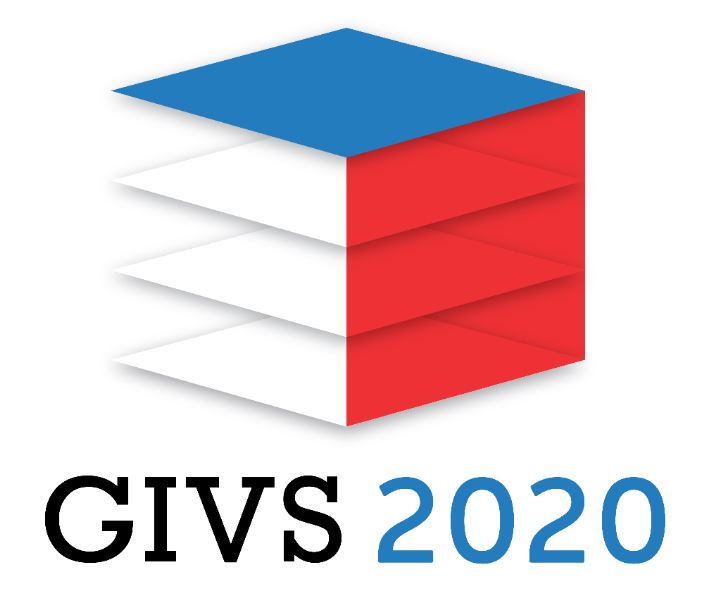
Česká asociace pro geoinformace (CAGI) Vás srdečně zve k účasti na 13. ročníku výroční konference Geoinformace ve veřejné správě, která se uskuteční na Novotného lávce 5 (sál č. 217) v Praze v termínu 4.–5. 5. 2020. Témata konference DMVS, DTM, Digitalizace stavebního řízení GeoInfoStrategie Dopad Koncepce zavádění BIM na NIPI v ČR Významné projekty veřejné správy, INSPIRE Smart City a GIS Otevřená […]
The post Geoinformace ve veřejné správě 2020 (pozvánka) appeared first on GISportal.cz.
Mindbreeze and Booz Allen Hamilton Join Forces to Serve the FDA
17.1.2020 19:39 GISCafe.com Webcasts-Webinars CHICAGO, Ill. & MCLEAN, Va. — (BUSINESS WIRE) — January 16, 2020 — Mindbreeze, a leading provider of appliances and cloud …Eagle Point Drives Innovation Again; Launches Autodesk Construction Cloud Content on Award-Winning Platform
17.1.2020 19:38 GISCafe.com Webcasts-Webinars Dubuque, IA, Jan. 16, 2020 (GLOBE NEWSWIRE) -- Today, Eagle Point Software Corporation announced that it has added content and training for …HP Inc. Board Declares Dividend
17.1.2020 19:37 GISCafe.com Webcasts-Webinars PALO ALTO, Calif., Jan. 16, 2020 (GLOBE NEWSWIRE) -- The HP Inc. board of directors has declared a cash dividend of $0.1762 per share on the …Eager to help, Filipinos crowdsource info to aid victims of Taal Volcano eruption - Rappler (Google Maps)
17.1.2020 19:37 GISCafe.com Webcasts-WebinarsGlobal Satellite Data Services Market Drivers, Constraints, Threats, Challenges & Opportunities During the Forecast Period, 2018-2027 - ResearchAndMarkets.com
17.1.2020 19:36 GISCafe.com Webcasts-Webinars DUBLIN — (BUSINESS WIRE) — January 17, 2020 — The "Satellite Data Services - Global Market Outlook (2018-2027)" report has been …UAV Propulsion System Market - Global Industry Analysis, Size, Share, Growth, Trends, and Forecast, 2019 - 2027
17.1.2020 19:35 GISCafe.com Webcasts-Webinars New York, Jan. 17, 2020 (GLOBE NEWSWIRE) -- Reportlinker.com announces the release of the report "UAV Propulsion System Market - Global Industry …TomTom closes deal with Huawei for use of maps and services -spokesman - Nasdaq (Google Maps)
17.1.2020 19:34 GISCafe.com Webcasts-WebinarsLeica Introduces the M10 Monochrom Rangefinder Full-Frame 40MP Camera; Get the latest information from B&H Photo
17.1.2020 19:34 GISCafe.com Webcasts-Webinars New Leica M10 Monochrom Digital Rangefinder Camera Hands on ReviewPhotography News: Leica has just revealed the incredible M10 Monochrom camera, …
Satellite-based Earth Observation Market in Europe 2019-2023 | Evolving Opportunities With Airbus and iSi | Technavio
17.1.2020 19:33 GISCafe.com Webcasts-Webinars LONDON — (BUSINESS WIRE) — January 17, 2020 — Technavio has been monitoring the satellite-based earth observation market in Europe …2020 Sentinels calendar
17.1.2020 14:50 ESA Observing the EarthSentinels calendar
Download the 2020 Copernicus Sentinels calendar
2020 Sentinels calendar
17.1.2020 14:50 ESA Observing the EarthSentinels calendar
Download the 2020 Copernicus Sentinels calendar
vrchní referent/rada – investiční referent
17.1.2020 12:34 ČÚZK - předpisy a opatření Katastrální úřad pro hlavní město Prahu zveřejnil novou aktualitu: Ředitel úřadu vyhlašuje výběrové řízení na služební místo: referent KN – právník do právního oddělení XI.referent KN – personalista 17.1 2020
17.1.2020 12:34 ČÚZK /Urady/Katastralni-urady/Katastralni-urady/Katastralni-urad-pro-hlavni-mesto-Prahu/O-uradu/Aktuality/referent-KN-–-personalista-17-1-2020vrchní referent/rada – investiční referent
17.1.2020 12:34 ČÚZK - předpisy a opatření Katastrální úřad pro hlavní město Prahu - Katastrální pracoviště Praha zveřejnil novou aktualitu: Ředitel úřadu vyhlašuje výběrové řízení na služební místo: vrchní referent/rada – investiční referentvrchní referent/rada – investiční referent
17.1.2020 12:34 ČÚZK /Urady/Katastralni-urady/Katastralni-urady/Katastralni-urad-pro-hlavni-mesto-Prahu/O-uradu/Aktuality/referent-KN-–-personalista-17-1-2020referent KN – personalista 17.1 2020
17.1.2020 12:34 ČÚZK - předpisy a opatření Katastrální úřad pro hlavní město Prahu zveřejnil novou aktualitu: Ředitel úřadu vyhlašuje výběrové řízení na služební místo: referent KN – personalistareferent KN – personalista
17.1.2020 12:31 ČÚZK - předpisy a opatření Katastrální úřad pro hlavní město Prahuvypisuje výběrové řízení na místo
referent KN – personalista



